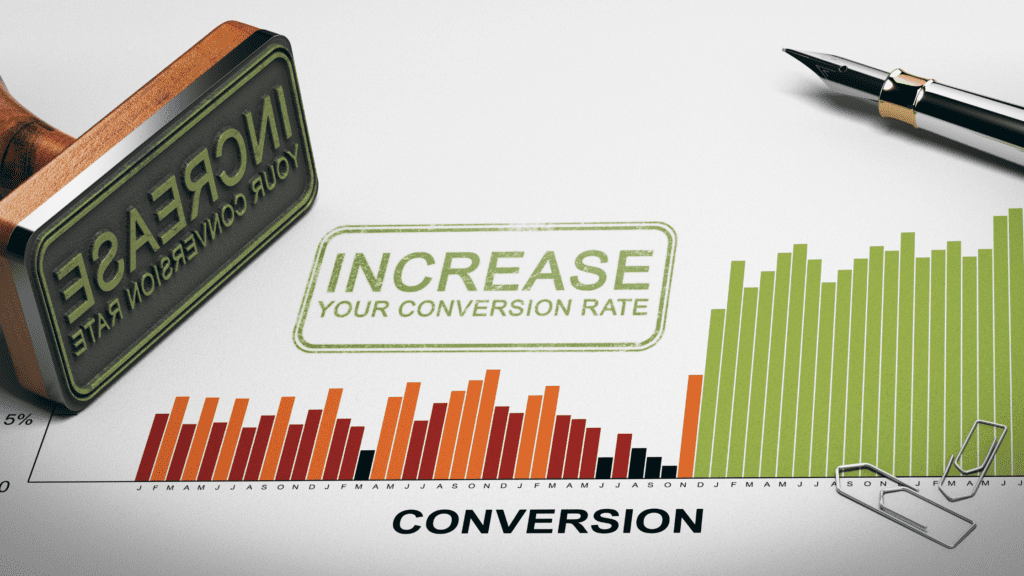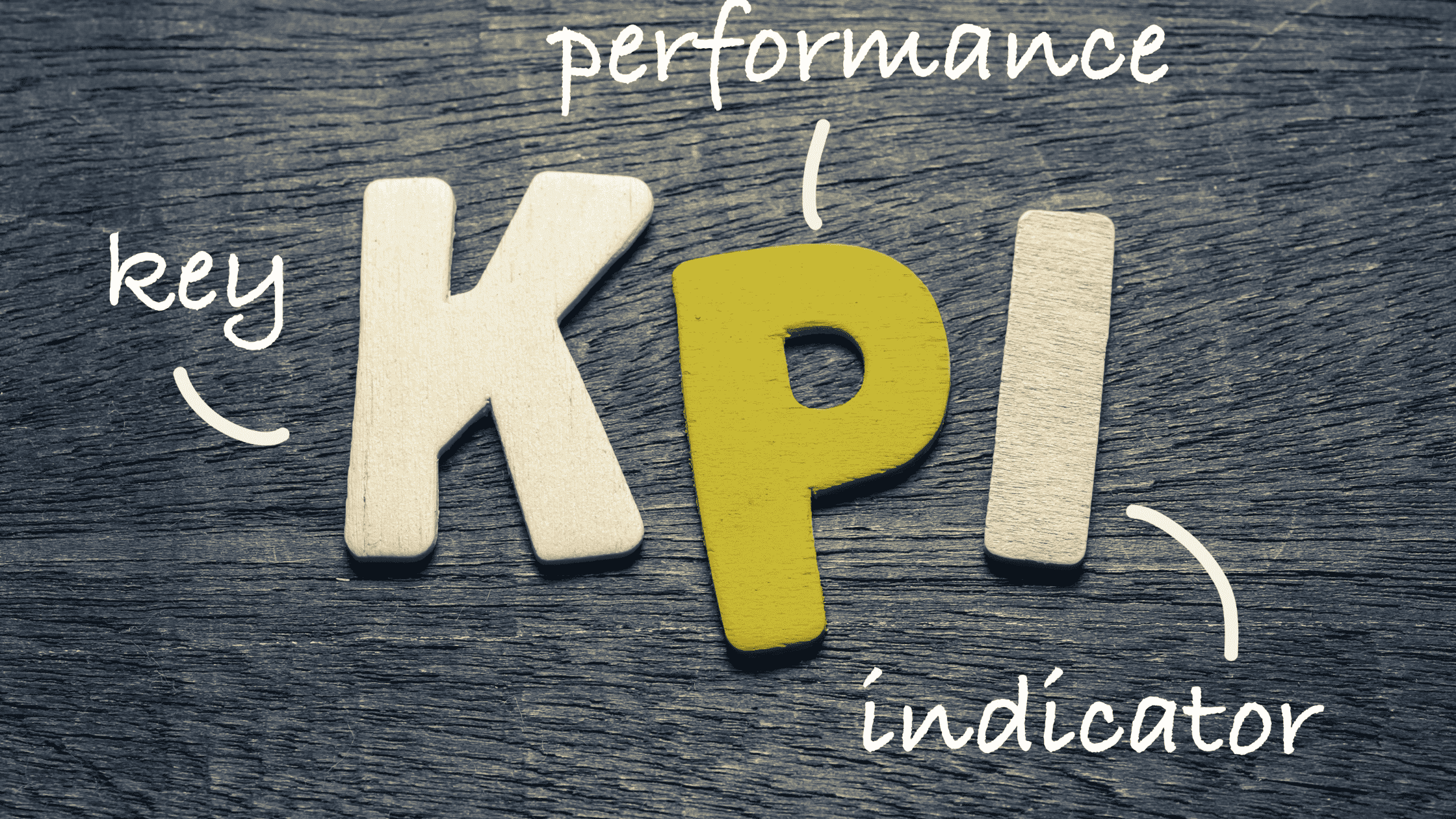The key figures and KPIs for digital marketing in this article are specifically aimed at B2B companies that use inbound marketing to attract more visitors, generate more leads, and close more businesses.
Imagine that you are driving more visitors to your website, and you are able to get more leads than ever before.
Your management may question what marketing activities actually generate sales. The right KPIs and metrics are necessary to measure and show that your marketing is increasing the company’s sales.
KPI: What Is It Used For?
KPIs (Key Performance Indicators) are clear and specific metrics or key figures used by companies and organizations. They can be used to track and measure the progress in achieving a specific goal.
For example, KPIs can be used to measure the ROI of marketing. This can be used to prove to the management the number of sales generated through marketing.
There are thousands of KPIs for marketing. It’s easy to get caught up in routines that make you look at irrelevant KPIs and metrics that show nothing. It is also common for the KPIs you work with to change over time as you gain greater control over your digital presence.
This means that for a period of time you need to focus on getting traffic to the website to later measure the number of leads.
You also want to measure how many of these leads actually turn into customers. And once that happens, you may want to know which marketing activities ultimately led to the most profitable deals. Even here, the number of KPIs in marketing can be overwhelming.
6 KPIs For Digital Marketing & KPIs Examples
KPI #1: Pipeline Velocity

This KPI in project management is a bit of a premium for many. But, I still want to start with it because it is my favorite among the KPIs for marketing in B2B companies.
Pipeline Velocity is the most important KPI and is derived from a formula. What I like about it is that it includes some important aspects of a company’s sales and marketing strategy. These are:
- Number of qualified business opportunities
- The proportion of closed deals
- Size of the deal
- Number of days taken to close the deal
Qualified Opportunity
First, this formula gives the marketing department an important task – to generate as many qualified business opportunities as possible. Not just leads or contact information from someone who has downloaded a guide or seen a webinar, but actual business opportunities/quotes.
This means that you can optimize marketing by creating content to attract the right target group. You get to learn the type of help that is needed by your target group.
You will notice a common thread in the type of work that creates the best-qualified contacts and the type of leads that are not interested in buying.
Win Rate
The second part of the formula is about the sales team and how good you are at closing deals. Here, too, content plays an important part. Many leads that come in through the website are not ready to buy.
But with the help of the following, you will be able to get better leads:
- right content
- high level of commitment to social media
- a smart advertising strategy that ensures that the target group sees the solutions to their problems
This makes it easier for the sales team to close more deals. This means that you must reduce the number of noes and increase the proportion of yeses. With the help of the marketing team, you can figure out how to generate the best business opportunities.
Deal Size
The third part of the formula focuses on the value of the deal. That is, how much an average business is worth or what an average customer buys while having a business relationship with your company.
The size of the deal can also change. If you as a marketer are good at educating your prospect about the value of buying your solution, the tendency to pay more for that solution is also higher. Over time, you get better at increasing the value of each business.
Length Of Sales Cycle
The last part of the formula is about how long this process takes. In B2C sales, it is common for the transactions to take place in minutes. In B2B deals, a sales cycle can take years to complete.
By measuring how long it takes from the first contact to closing the deal, you can also create forecasts for your sales.
It can often be seen that the leads that are actively searching for a solution to their problem on Google have a shorter sales cycle than those who click on an ad.
These are the type of leads that result in the best business opportunities. It also forms the basis for improving SEO and working more with the type of content to attract more visitors to your site.
The disadvantage of the KPI Pipeline Velocity is that it takes a while to get there. You need to have a lot in place before you can start working this way.
But having this type of KPI in mind makes the prioritization of marketing and sales activities easier. It creates a reason to look at different sales methods such as video, digital meetings, and chatbots.
And it becomes clear for the marketing team to evaluate the content and the type of contacts that come in. It pushes things towards working in a result-driven manner, which is in the best interest of your company in the long run.
But for those of you who cannot get that far, what should you measure then?
KPI #2: Sales From Digital Marketing
The first time I saw the sales data, it changed my view on digital marketing. This is because it gave an overview of the most important things about a website in the same report. This report or overview also contains several different KPIs for digital marketing.
The KPIs are:
- Number of people that have visited the company’s website
- Total number of visitors that have been converted into leads/ contacts
- Number of leads that have become customers
These 3 digital marketing KPIs together form a simplified variant of the process described above and are part of a typical digital buying journey.
It will be particularly interesting for business leaders and management teams to gain valuable insight into their marketing process. You get to see if your digital presence is well established in relation to your goals and expectations.
Why Is This Important?

The fact that you have many visitors does not matter much if they are not the right type for your business. Also, getting a lot of leads makes no difference if they do not turn into customers.
Maybe, it just means that your sales team is spending a lot of time contacting people who do not want to be contacted.
You should pay attention to the conversion rate (conversion at each step of the marketing process). What proportion of the visitors to the website converted into leads? How many of the leads have become customers?
When you know how much an average customer generates in revenue, you can also calculate the Customer Lifetime Value (CLV). You do this by finding out what an average order is and how many orders a typical customer makes during the entire period of the relationship with the company.
For example, if you have a customer who makes an average order of $100,000. If the customer makes 3 orders per year and stays for 3 years, this means that each customer is worth (100,000 x 3 x 3) = $900,000. This value is called Customer Lifetime Value.
Suppose that only 1.4% of the leads become customers. It means that you need about 70 leads for winning a new customer. And in order to get 70 leads, you need a lot of visitors.
All your baseline values for generating the desired sales need to be calculated. This way you can map the ROI to the marketing efforts needed to bring in the sales set in your goals.
KPI #3: Customers Or Sales Per Source

This KPI in marketing is slightly more detailed than the previous ones. It still remains at a level that most of the management team feels comfortable with and interesting to analyze.
The digital marketing KPI describes where the visitors come from. Here you can clearly see what channels, e.g., organic search, paid search, social media, email, etc. generates the most leads and customers.
Do you use a CRM that is linked to your website? For example, with HubSpot, you can also see how much each channel generates in sales (See KPI # 4).
KPI #4: Business Opportunities Per Source

How qualified are your leads? By tracking the business all the way from the first contact to the closing of the deal, your marketing team can get a better understanding of the ROI generated by their work.
This KPI dashboard for marketing provides an overview of how much each channel has generated in terms of quotes or business opportunities.
A report can be created by adding up all the quotes that are active and were sent out to your prospects. It can also be sorted by how the company came in contact with you – i.e., through which channel.
Here you can clearly see the direct potential value of each source. KPI Examples for this include the amount of business generated from the increased visibility on Google.
KPI #5: Number Of Days To Close The Deal

The fact that the sales team gets a large number of leads to contact
does not necessarily mean that the company will have increased sales. This is because it is governed by the quality of your leads and the process around generating them.
Therefore, it is important to understand how lead generation actually works. If it takes too long to convert a lead into a customer, it means that you need to streamline the process or increase the quality of the leads you generate.
Find out how long it takes on average for a visitor to your site to complete their first deal. It can differ enormously between different companies and also depends on what you sell. So, it is an important analysis to do to get insights into the company’s business cycles.
This can also be your argument for involving and pepping up the sales team, as they have a great opportunity to influence these numbers. And the management gets a clear picture of the result of your work and the sales team’s responsibility to take your leads all the way and reach the goal.
You can also clearly show the need for a larger budget, so as to be able to get better leads for the sales team.
How Is This KPI In Project Management Useful?
Marketers, CEOs, and management teams often speak in completely different terms.
Digital marketers often come from a creative world where color, feeling, and words are the driving factors for their actions.
Business leaders, on the other hand, are often driven by KPIs, numbers, and directly measurable sales. In terms of the management, they want to see clear and measurable financial results.
- Do we get more customers?
- Are we increasing sales?
- Why should we spend money on marketing?
No management wants to give more space to a marketing team that can not demonstrate what their efforts generate in terms of results.
By tracking the right KPIs for marketing, your team can prove how their work contributes to the company’s sales, which will also strengthen their position in the company.
KPI #6: Number Of Leads In Each Step Of The Buying Process

Even if your company has lots of leads in your CRM, it is important to keep track of where they are in the buying process. Thus, you can also get an indication of how much business you are generating.
You can create a report to show exactly where they are in the process. It also gives you important information about whether your leads generally get stuck somewhere in the process.
Read more about the different types of leads linked to your sales and marketing strategy.
Use KPIs That Management Understands
To make your management team understand how important your marketing team’s efforts are, you need to learn how to translate common marketing measures into valuable KPIs that they can follow.
You get an overview of all the work you and your marketing team do and at the same time help the management to see the big picture.
This way, you can get the marketing and sales teams on the same page. Both of them would be striving to achieve the same goal – to increase the company’s sales.
The best KPIs are therefore those that combine marketing and sales numbers in a single report. These types of reports are best suited for B2B companies where some form of lead generation takes place.
